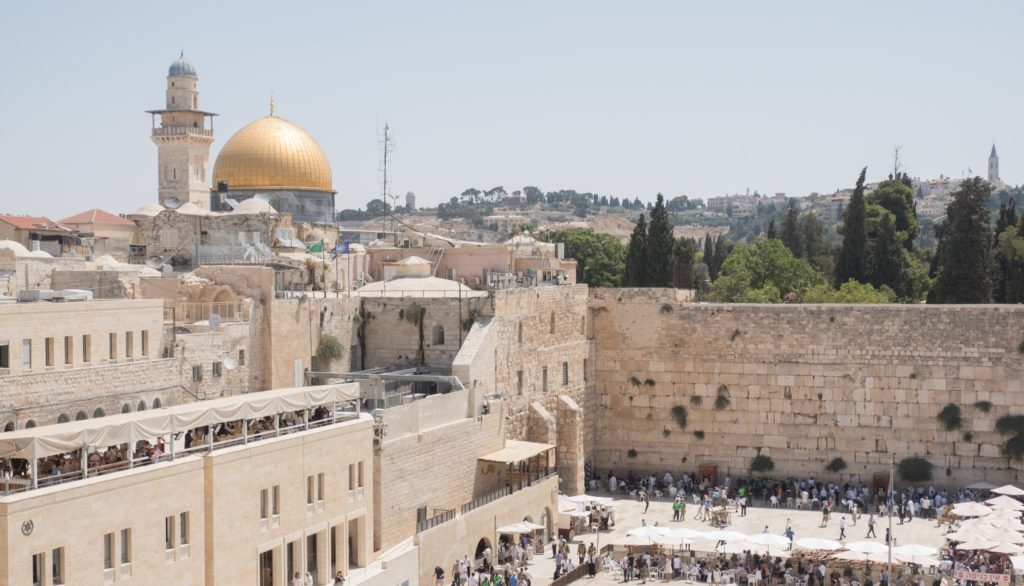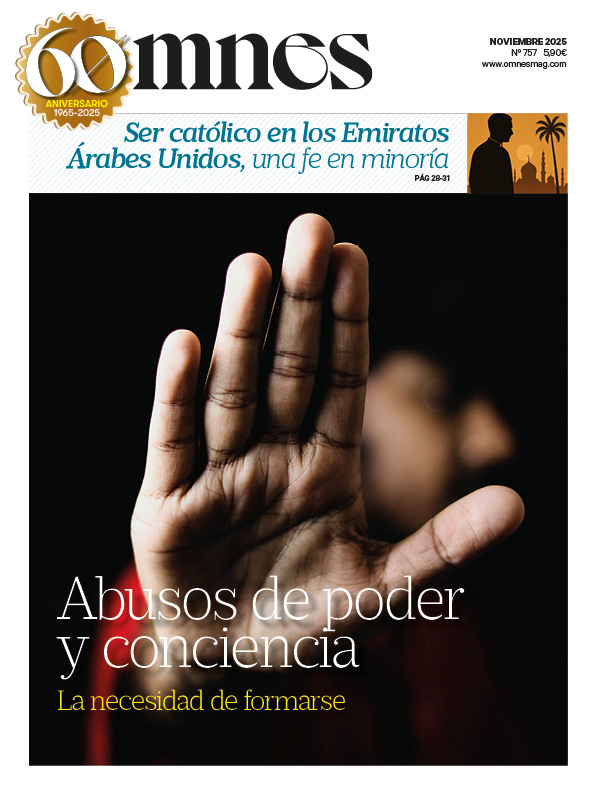The first few months of 2025 have seen a number of extraordinary archaeological discoveries in the biblical region of Israel/Jordan, some of them retelling accounts of the Scriptures. International and local researchers have contributed new data that connect with biblical passages, confirming or qualifying millenary traditions. The following are the three most relevant biblical discoveries of the first half of 2025.
Roman Garden under the Holy Sepulcher (Jerusalem)
In April 2025 it became known that the Sapienza University of Rome, in collaboration with the Israel Antiquities Authority (IAA), excavated beneath the basilica of the Holy Sepulcher in JerusalemThe remains of a 1st century A.D. garden were found. Olive and vine seeds and pollen from ~2,000 years ago were found, as well as low stone walls and fill dirt indicating an ancient agricultural area. According to archaeologist Francesca Stasolla, these indications point to "an agricultural use" of the area just before Hadrian's time (130 AD) when the primitive quarry was abandoned and turned into a cemetery.
This finding fits remarkably well with the Gospel of John 19:41-42, which narrates that "there was a garden in the place where they crucified him, and in the garden, a new tomb where no one had yet been buried." As a newspaper report explains, under the basilica - not far from the Tomb of Christ and Golgotha - was discovered "a small area with remains of vine and olive cultivation" from about 2,000 years ago. This botanical vestige, supported by paleobotanical analysis, reinforces the historicity of the Gospel scene: it documents the presence of an orchard next to the burial place as described by St. John. At the same time, the very diffusion of the findings in international media such as National Geographic and Times of India confirms the veracity of the discovery.
The discovery adds archaeological data compatible with the Christian tradition about the tomb of Jesus. It gives us a more accurate picture of what that environment would have been like in the first century A.D.: an ancient quarry-cemetery reused in part as an olive orchard and vineyard. As Stasolla comments, "archaeology provides data that are then interpreted" and in this case it documents an agricultural space in the quarry. For theologians and believers, it supports John's account; for academia, it provides new historical context. Excavations continue, but it is already considered a relevant milestone for biblical studies (and for the restoration project of the medieval Christian temple itself).
On the other hand, the fact that Christ's death and resurrection occurred in a "garden" has a strong symbolic charge: the new Adam redeeming the sin of the first garden (Eden).
Hellenistic pyramidal structure in Nahal Zohar (Judean Desert)
In March 2025, archaeologists from the Israel Antiquities Authority reported the discovery of an impressive 2,200-year-old pyramidal structure in the Judean Desert near Nahal Zohar. It is a large pyramid-shaped (tombite) mound of hand-carved stones, dated to the Hellenistic period (Ptolemaic/Seleucid rule). Under the collapsed pyramid they discovered what appears to be a "way station" used by traders transporting salt and bitumen from the Dead Sea to the Mediterranean.
The site turned out to be very rich: papers and coins that connect with the Hellenistic period. In the depths they brought to light papyrus rolls in Greek and bronze coins minted under the Ptolemies and the Seleucid king Antiochus IV, along with weapons, wooden tools and leather fabrics very well preserved thanks to the dry climate. A press release quoted by the media details: "included are papyrus scrolls written in Greek, bronze coins stamped during the reigns of the Ptolemies and Antiochus IV, weapons, wooden tools and leather fabrics". The directors of the excavation (M. Toledano, E. Klein and A. Ganor) qualify the pyramid as a "revolutionary" find for the history of the region.
This discovery expands our knowledge of the Hellenistic period in desert Palestine. The combination of the pyramidal structure (perhaps a watchtower or sanctuary) with Greek documents and Ptolemaic/Seleucid coins indicates an organized presence of political power and international trade in the area. It is not a "biblical" find in the strict sense (it does not connect to Old Testament narratives), but it is coeval with the late Second Jewish Temple period. However, the location in Israel makes it interesting to understand the cultural background where Christianity would later flourish. In short, such a pyramidal structure did exist in 2025 according to reputable press sources, and its study could rewrite part of the local Hellenistic history.
Although not directly connected to the Bible, this discovery helps to contextualize the political and economic situation in Palestine at the time between the Old and New Testaments, and could shed light on the origins of the Essene community or the background of Hellenistic Judaism.
Mahanaim: Tall adh-Dhahab al-Gharbi in Jordan
Also in January 2025 a relevant find was announced in Jordan: Israeli archaeologists (I. Finkelstein and T. Ornan) have identified the site of Tall adh-Dhahab al-Gharbi with the ancient biblical city of Mahanaim (literally "two camps"), mentioned in Jacob's account (Genesis 32) and as a refuge of David and other kings of Israel. According to the reports, the evidence agrees with the biblical descriptions: Mahanaim would be located next to Penuel (which would correspond to the nearby Tall adh-Dhahab al-Sharqi).
The team started from ancient engraved stone blocks found between 2005-2011 by German archaeologists at the site. These carved slabs show scenes very similar to those of an Israelite palace of the northern kingdom: figures playing lyres, a hunted lion, a date palm and a figure carrying a goat to a banquet. Researchers interpret these images to suggest an elite building, perhaps a royal residence at Mahanaim. A newspaper article notes: "stone blocks were found with detailed engravings, including people playing lyres, a lion in a hunting scene, a palm tree, and a figure carrying a goat to a banquet. They describe the latter as 'intended to provide food for a banquet'" . In addition, the iconography and style resemble murals from the 8th century B.C. kingdom of Israel (e.g. Kuntillet Ajrud), so the stones are believed to date from the same period under King Jeroboam II.
These works suggest that the identification of Tall adh-Dhahab al- Gharbi with Mahanaim, including the curious sculpted scenes, did arise in 2025. Mahanaim is described in the Bible as the place where David sought refuge and where another Israelite king was crowned, so finding signs of a palace there is consistent with tradition (although, as the researchers themselves warn, there is "no way of knowing" whether the biblical kings actually set foot in that building). In any case, the publication in the journal Tel Aviv and the diffusion by international media give it solidity: it is a recent academic hypothesis based on real vestiges. The discovery in Jordan adds another possible archaeological "link" to the biblical narrative of the northern Israelite kingdom.
Mahanaim appears in Genesis 32 as the place where Jacob sees the angels ("two camps") and in 2 Samuel as David's refuge. This finding links biblical narratives with real remains in a hitherto little-excavated region.
Other biblical findings in 2025
- Byzantine monastery of Kiryat Gat (Israel), discovered in January 2025 with a central mosaic quoting the Deuteronomic verse "Blessed are you when you enter and blessed are you when you leave" (Deut. 28:6). Indeed, in Kiryat Gath (southern Israel) a large Byzantine monastic complex (5th-6th century AD) with a mosaic of impressive workmanship came to light. The central mosaic features crosses and animals, accompanied by an inscription in Greek with a passage from Deuteronomy: "Blessed are you when you enter and blessed are you when you leave". Although this is from a much later period (early Christian), the finding reveals the survival of biblical texts in ancient liturgical art and is unique for its preservation and content.
- Dead Sea Scrolls - A recent June 2025 study using artificial intelligence has redated several biblical fragments. According to CBN News, the AI tool "Enoch" analyzes ancient writing and places some manuscripts at around 2,300 BC, up to 150 years earlier than previously thought. For example, fragments of the book of Daniel would now coincide with the time of the prophet (6th century BC). This adjustment strengthens the historicity of certain traditions and demonstrates the potential of technology in textual archaeology.
- Other recent findings - Specialized media have reported more cases of biblical interest: an ancient ritual has been documented in Jerusalem that could be linked to practices of the First Temple Period (2,800 year old cave cults), and finds of Phoenician inscriptions and ossuaries. after new 3D scans. Excavation also continues at key sites (City of David, Qumran, Dead Sea) every year.
Taken together, each of the discoveries in the first half of 2025 provides valuable information: the garden of Gethsemane supports a Gospel detail, the Hellenistic pyramid reveals commercial dynamics coeval with early Christianity, and the site of Mahanaim connects with Israelite chronicles. Along with other discoveries, we see how archaeology continues to dialogue with the Bible: not so much to "prove" each account, but to nuance the historical context in which they were written.
Doctor of Canon Law








